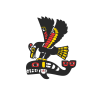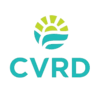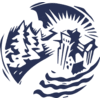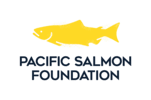August 20, 2020
(Duncan BC) “Cowichan River was literally on ‘life support’ last summer, with electric pumps keeping the water flowing,” said Chief William Seymour, Chief of Cowichan Tribes First Nation, and co-Chair of the Cowichan Watershed Board. “This year the Cowichan is doing much better thanks to the wet spring, but the Koksilah is in rough shape again.”
Without a headwater lake, and less summer rain, Koksilah flows are often critically low for coho salmon, steelhead and resident trout by mid-August. In order to address this, Cowichan Tribes and the Province of BC have signed an Interim Letter of Agreement to work in equal partnership to explore the option of creating a Water Sustainability Plan (WSP) for the watershed. This is a new Water Sustainability Act tool and, if completed, a Koksilah WSP could be the first in the Province. The initial phase, a scoping exercise, is underway with committees now struck to gather technical information and community input to inform the partners.
In the meantime, other organizations including the Watershed Board have been communicating since April in an effort to coordinate monitoring and planning for Koksilah’s anticipated low flows. Last year, the BC Government issued a Fish Protection Order on August 19 when flows fell to 180 Litres/second. The order curtailed irrigation of forage crops (hay, corn, etc.) to some Koksilah agricultural producers, impacting crop quality and yield, as well as use of water for industrial purposes. This year, the Agriculture Research and Development Corporation (ARDCorp) initiated a Group Environmental Farm Plan (EFP) on behalf of farmers located within the Koksilah watershed to assess and address agriculture’s role in the water sustainability of the Koksilah River. As an interim measure to address water shortages this dry season, local farmers have adopted a low flow irrigation schedule to reduce water use.
The Cowichan Watershed Board acknowledges this contribution to protect the future of Koksilah River fish populations by local agricultural producers, and encourages all other Koksilah watershed businesses and residents to also reduce water use by fifty percent during these critically dry weeks, as recommended by the Province. The Cowichan Estuary Nature Centre has programs in place to assist Koksilah area home gardeners with transitioning to water wise techniques.
The Cowichan and Koksilah are the two major rivers in the Cowichan watershed, which supports pacific salmon, steelhead and resident trout, including chinook salmon, a critical food source for the endangered Southern Resident orca population. Located on Eastern Vancouver Island, adjacent to the Salish Sea, this river is the heart of the Cowichan Tribes First Nation’s territory, and a favourite recreational destination. The rivers also support major employment for the region, through fishing, farming, tourism, and the Catalyst Paper mill.
_________________________________________
Media Contact
Tom Rutherford, CWB Executive Director / 250-815-5930
More Info: Why Fish Need Water (Cowichan/Koksilah – 6 min. video) https://www.youtube.com/watch?v=ZsD4X1zPmTw
 Email
Email



